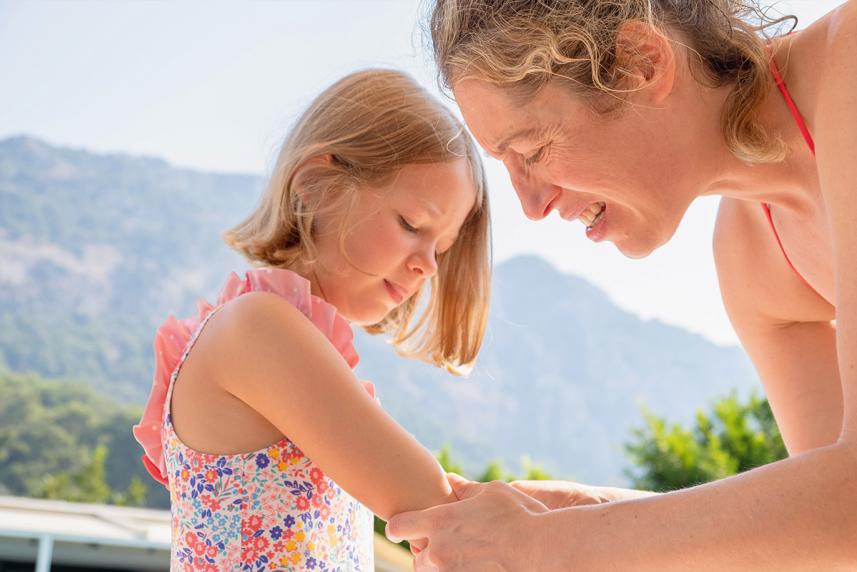
We have more than 90,000 doctors at over 2,000 locations. Our team will help you get the care you need, when and where you need it.

Summer fun for kids can often come with its share of injuries. Get prepared by brushing up on these first-aid health tips.
Summer is all about playing and having fun outdoors. And when you’re a kid, that could be just about anything: tag, hide-and-go-seek, the list goes on and on.
But a sunny day can cause its fair share of “ouches” and tears. Your child might get a minor scrape, cut, or bruise.
Luckily, you don’t always need a doctor to treat your child’s boo-boos. Armed with a first-aid kit, you can handle many minor mishaps at home and on the go.
Here are four common injuries that might happen to your child, and how you can treat them.
Of course, some severe injuries may require emergency care. If you have questions or concerns, you can always call your family doctor or a nurse hotline (if you have access to one).

We have more than 90,000 doctors at over 2,000 locations. Our team will help you get the care you need, when and where you need it.
Scrapes can happen when your kid takes a tumble on a rough surface such as concrete or asphalt. Here’s how to care for a scrape, according to John M. Good, MD. He’s an Optum general pediatrician in Rio Rancho, New Mexico.
Most scrapes typically don’t need medical attention. But call your child’s doctor if you can’t get the bleeding to stop, or if you can’t get all the dirt and debris out of the wound. They may recommend having a doctor look at the wound.
As the scrape heals, watch for signs of infection. Call your child’s doctor if you notice any of these signs:1
You’ll also want to make sure your child is up to date on their tetanus shot or the latest booster. Tetanus is a serious disease that affects the nervous system. It’s rare, but kids can get it from cuts, scrapes and even burns (see below). The tetanus vaccine is part of the DTap vaccine that young kids get. Tetanus boosters are needed every 10 years.2
Kids can get cuts on pieces of broken glass, sharp edges and more. And cuts can be shallow or deep, smooth or jagged.
The tricky part with cuts is deciding whether they need stitches, Dr. Good says. “If the cut is small and the edges are coming together, chances are your child doesn’t need stitches,” he says. “In that case, you probably can treat the cut at home.”
Some cuts may need to be looked at by a doctor. Call your child’s doctor in any of the following cases. They may recommend that the wound be looked at by a doctor.3
Puncture wounds are caused by a pointy object piercing the skin. Maybe your kid falls on a pointy stick, for example. These types of wounds may seem small on the surface, but they can be deep. And deep wounds are more likely to get infected, say Dr. Good. You’ll need to rinse and clean a puncture wound well to prevent infection.
Punctures wounds may need to be a looked by a doctor. You’ll want to call your child’s doctor if:3
Any wounds caused by an animal or human bite should also be looked at by a doctor. Call your child’s doctor, or you may need to head to an urgent care center in this case.
You can treat minor cuts and puncture wounds the same way you care for scrapes:3
For more info on where to go for care, check out this episode of our podcast, Until It’s Fixed
Kids can get minor burns from touching hot surfaces, spills from hot liquids and more. Good news: You often can safely treat minor burns at home. A burn is considered minor if:4,5
Burns caused by an electrical current that is more than a minor jolt or from chemicals typically require medical evaluation. Call you child’s doctor in the case of electrical or chemical burns.
Here’s how to care for minor burns at home:6
Large second-degree burns (larger than 2-3 inches) warrant urgent medical care. You’ll also want to get urgent care for second-degree burns of any size in these places:4,5
If the burn looks blackened or white and feels dry and leathery, that could be the sign of a third-degree burn. And strangely, your child might not feel the burn at all. That’s because those burns damage deeper layers of skin, including the nerves that feel pain. So, numbness is a sign of a third-degree burn.
“A third-degree burn is not painful, but it is very serious,” Dr. Good says. “It is important to get medical care.”
If you think your child has a third-degree burn, your best option is to seek emergency care. Depending on the size, you may need to call 911.4,5
Insect stings aren’t usually an emergency. But they can be if your child is allergic to them. Watch for signs of a severe allergic reaction, known as anaphylaxis. Those might include:7
These can be signs of anaphylactic shock. That’s a life-threatening allergic reaction. Call 911 right away. Your child should also be seen by a doctor if they have multiple stings or were stung inside the mouth.
Once you know your child is allergic to bee stings, talk to your doctor. They’ll prescribe emergency epinephrine (EpiPen®) or another emergency kit. You or your child will need to have it nearby at all times just in case. If your child has an emergency kit and is stung, it should be used while awaiting emergency care
You can save up to 80% on your medications with free coupons from Optum Perks. Look up your medications now.
Mild reactions can be treated at home. Here’s how:
As you’re treating the sting, keep watching for signs of anaphylaxis. Sometimes the reaction can be delayed. And watch for signs of infection as the sting heals.
(Looking for more information about how to keep your child safe from injury this summer? Learn what to do if they have a head injury.)
A well-stocked first-aid kit will prepare you to treat these problems and more at home. You can start with a premade first-aid kit and then add to it. Read our first-aid kit checklist for more guidance on what to stock up on.
Always read package directions and be sure you understand all directions and precautions before taking any medication. Over the counter medications can have side effects, interact with other medications or affect certain medical conditions. Follow your doctor’s advice about medicine use. And ask your doctor or pharmacist if you have any questions or concerns.
You can shop for all your first-aid needs at the Optum Store — all from the comfort of home. Start exploring. Even better? Most first-aid products are covered by your medical expense account (HSA or FSA). Look for the HSA/FSA badge in the Optum Store.
Sources
© 2024 Optum, Inc. All rights reserved. Do not reproduce, transmit or modify any information or content on this website in any form or by any means without the express written permission of Optum.
The information featured in this site is general in nature. The site provides health information designed to complement your personal health management. It does not provide medical advice or health services and is not meant to replace professional advice or imply coverage of specific clinical services or products. The inclusion of links to other web sites does not imply any endorsement of the material on such websites.
Stock photo. Posed by model.